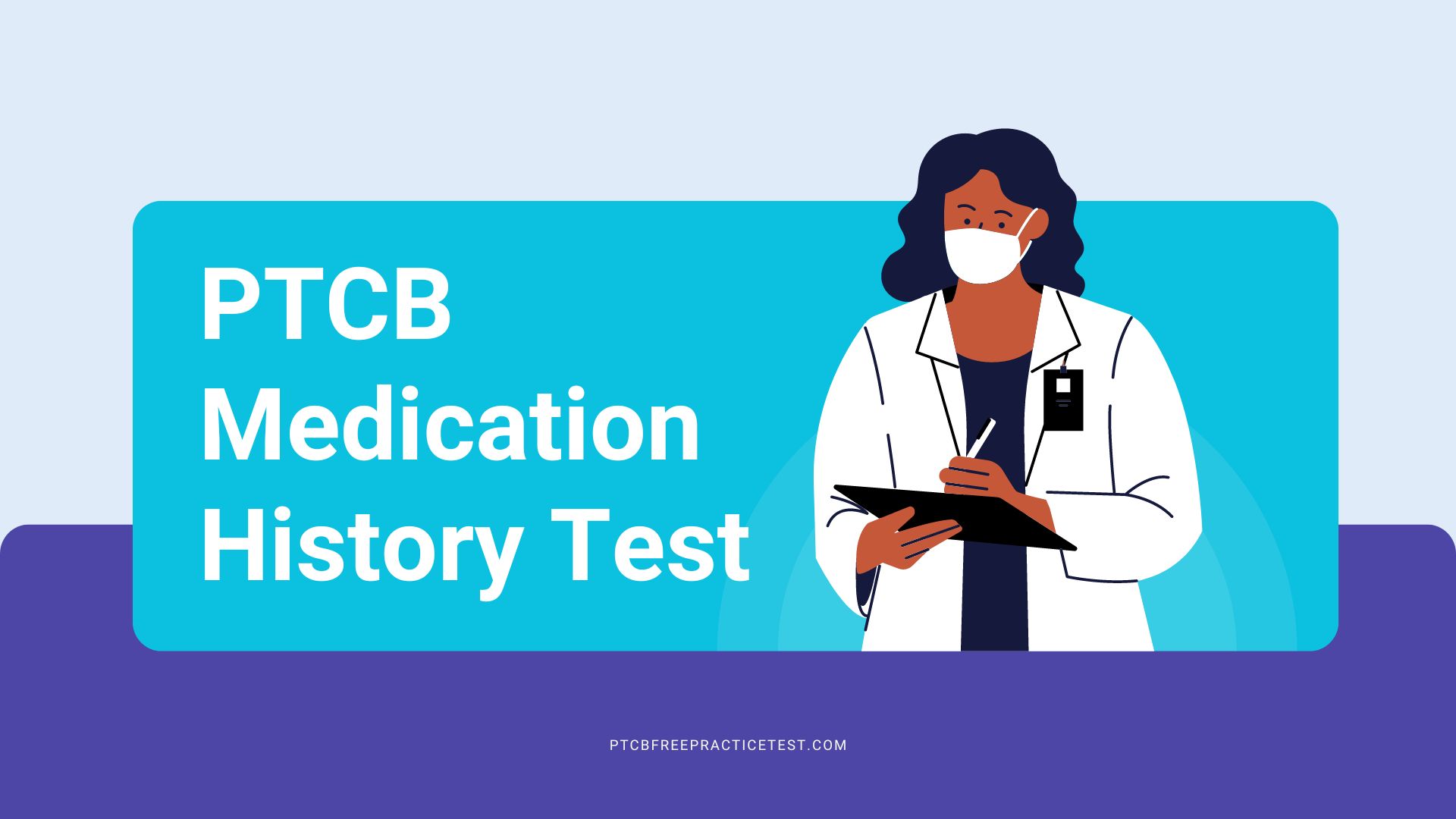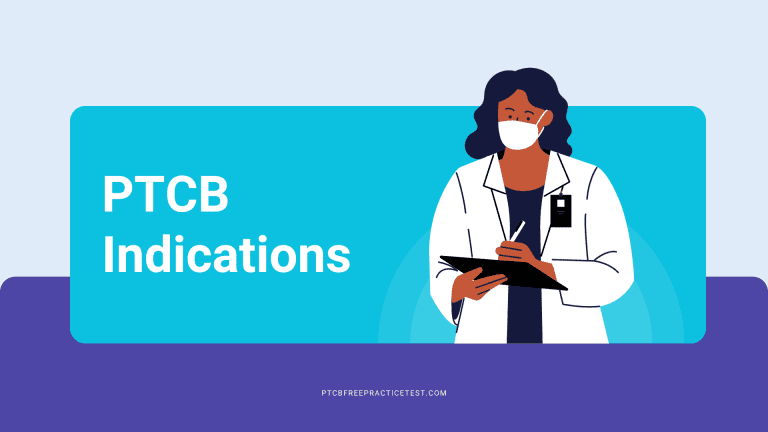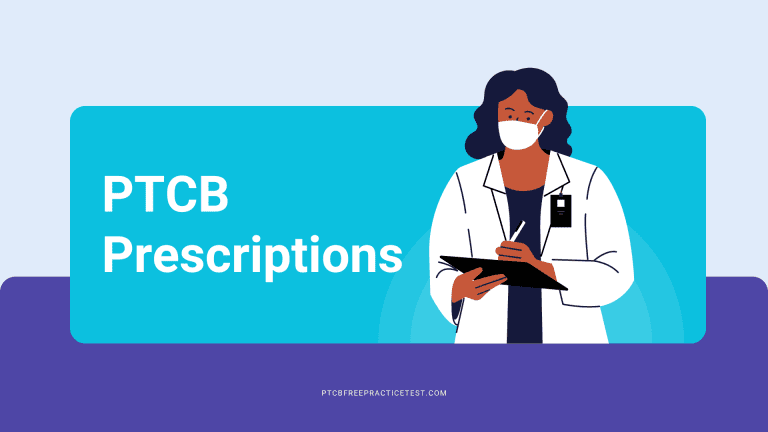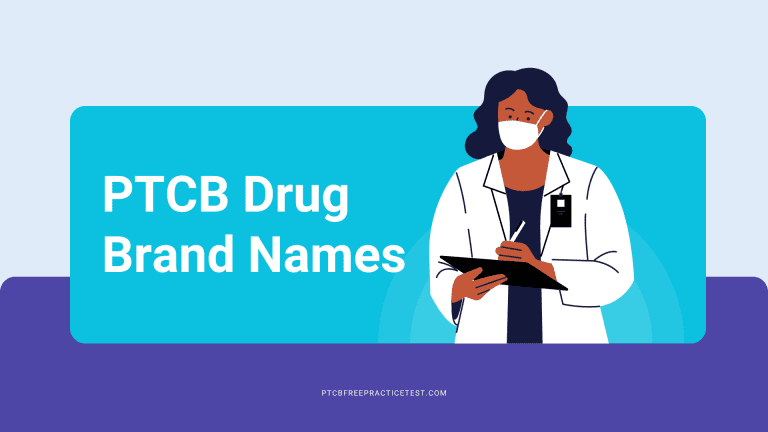Book Appointment Now

PTCB Medication History Practice Test
Welcome to the PTCB Medication History Practice Exam! This practice test is designed to help you prepare for the Pharmacy Technician Certification Board (PTCB) Medication History Exam by assessing your knowledge and understanding of key concepts and terminology.
Start the PTCB Medication History Practice Test
Results
Congratulations! You have passed the PTCB Medication History Practice Exam!
Your hard work and dedication have paid off, and you have demonstrated a strong understanding of key concepts and terminology related to medication history, as well as patient safety and quality assurance strategies. Your score indicates that you are well-prepared for the actual PTCB Medication History Exam. Keep up the great work and continue to build on your knowledge and skills.
Unfortunately, you did not pass the PTCB Medication History Practice Exam.
While this result may be disappointing, it is important to remember that it is a valuable learning opportunity. Identifying areas where you need further study and practice will help you improve and prepare more effectively for the actual exam.
#1. What is the primary difference between a medication allergy and medication intolerance?
#2. Translate the following patient-friendly term into medical terminology: “high blood pressure.”
#3. Which of the following is an example of primary nonadherence?
#4. Which vaccination is typically administered annually?
#5. Which of the following is a common type of medication error?
#6. Why is it important to differentiate between look-alike and sound-alike medications?
#7. What is a recommended strategy for a pharmacy technician to maintain patient confidentiality according to HIPAA regulations?
#8. Which device can assist patients in maintaining a consistent medication schedule?
#9. What is a crucial step in verifying a patient’s identity before dispensing medication?
#10. What type of medication error involves giving a patient a drug at the wrong time?
#11. Why is patient education important in preventing medication errors?
#12. Which of the following is a strategy to minimize the risk of look-alike/sound-alike medication errors?
#13. Which device can help patients remember to take their medications at the correct times?
#14. What should a pharmacy technician do if they receive a prescription with unclear handwriting?
#15. How should a pharmacy technician verify a patient’s identity before dispensing medication?
#16. Which of the following best describes medication reconciliation?
#17. Which of the following is an example of a potential impact of medication errors?
#18. What is the importance of using appropriate identifiers when verifying a patient’s identity?
#19. Which strategy can help patients with visual impairments manage their medications safely?
#20. What is the best practice for a pharmacy technician to follow if a patient reports a medication allergy?
#21. What is one way to help ensure patients adhere to their medication regimen?
#22. Why is it important to document patient allergies and intolerances?
#23. What is an example of a high-alert medication that requires special precautions?
#24. Which of the following practices can improve medication safety at home?
#25. What is the potential consequence of not properly verifying a patient’s identity before dispensing medication?
#26. Which of the following should be done if a medication error is discovered?
#27. What is a common reason for secondary nonadherence?
#28. Which of the following vaccinations is recommended for adults to protect against shingles?
#29. What is the purpose of Tall Man lettering in medication names?
#30. Which factor can affect a patient’s ability to report medication information accurately?
#31. What is the role of a medication reconciliation process?
#32. Which of the following should be included in a medication history interview?
#33. What is the primary goal of HIPAA regulations in a pharmacy setting?
#34. Which strategy can help reduce medication errors in a pharmacy?
#35. Which of the following is a potential consequence of a medication error?
#36. What is the purpose of using barcodes in medication dispensing?
#37. Which factor can contribute to a patient misunderstanding their medication instructions?
#38. What is the purpose of a medication adherence program?
#39. Which of the following actions should be taken if a patient experiences a side effect from a medication?
#40. Which tool can be used to track medication administration in a hospital setting?
#41. What is the primary purpose of using child-resistant packaging for medications?
#42. Which of the following is an example of a look-alike/sound-alike medication pair?
#43. What is a common method for patients to organize their medications at home?
#44. Which patient population is at higher risk for medication errors due to polypharmacy?
#45. What is a key component of patient counseling to improve medication adherence?
#46. Which factor can interfere with a patient’s ability to adhere to a medication regimen?
#47. Why is it important to maintain accurate and up-to-date medication lists for patients?
#48. What should a pharmacy technician do if a patient reports a suspected adverse drug reaction?
#49. Which tool is commonly used to remind patients to take their medications?
#50. What is the benefit of using an electronic health record (EHR) system in a pharmacy?
#51. What is the primary purpose of medication therapy management (MTM)?
#52. Which strategy can help reduce the risk of medication errors in a busy pharmacy?
#53. What is a common cause of medication errors in the pediatric population?
#54. Which of the following is a best practice for ensuring accurate medication dispensing?
#55. What is the purpose of a black box warning on medication packaging?
#56. How can pharmacy technicians help patients with limited English proficiency understand their medication instructions?
#57. Which factor can increase the risk of medication errors in elderly patients?
#58. What is the role of the pharmacist in medication error prevention?
#59. Which of the following practices can help ensure the accuracy of a medication history?
#60. Why is it important to report and document medication errors?
#61. What should be done if a patient refuses to take a prescribed medication?
#62. Which of the following is an important aspect of patient counseling for new medications?
#63. What is the most appropriate action if a pharmacy technician finds a discrepancy in a patient’s medication list?
#64. How often should a pharmacy technician verify the expiration dates of medications in the pharmacy?
#65. What is the role of the patient in preventing medication errors?
#66. Which of the following is a method to improve medication adherence in patients with complex regimens?
#67. What should a pharmacy technician do if they suspect a prescription is fraudulent?
#68. Which of the following factors can influence a patient’s ability to adhere to a prescribed dosing schedule?
#69. What is a common barrier to medication adherence in patients with chronic conditions?
#70. Why is it important for pharmacy technicians to stay informed about new medications and therapies?
The practice exam covers two primary domains:
- Concepts/Terminology of Medication History (45%)
- Definitions of key terms in the medication history process (e.g., medication allergy vs. medication intolerance, medication adherence)
- Translation between patient-friendly terms and medical terminology
- Adherence metrics and differences between primary and secondary nonadherence
- Common vaccinations and vaccination schedules
- Patient Safety and Quality Assurance Strategies (55%)
- Types of prescription/medication errors (e.g., abnormal doses, incorrect quantity, incorrect strength, incorrect drug, incorrect route of administration, incorrect directions, wrong timing, missing dose, misinterpretation of drug concentration)
- Potential impact of medication errors, including look-alike/sound-alike medications (e.g., ampicillin/amoxicillin)
- Patient factors that influence the ability to report medication information accurately and adhere to prescribed dosing schedules
- HIPAA and best practices to maintain patient confidentiality during patient conversations
- Techniques or devices to assist with safe and consistent home medication use (e.g., pill boxes, medication calendars, medication alarms)
- Procedures to verify patient identity, including appropriate identifiers and knowledge of limitations for different identifiers
Exam Instructions
- Time Allotted: You have [insert time] minutes to complete the exam.
- Number of Questions: The exam consists of 70 questions.
- Passing Score: To pass the practice exam, you need to achieve a scaled score of 300 out of a possible 400.
- Format: Each question has four possible answers. Read each question carefully and select the best answer.
- Review: If time permits, review your answers before submitting the exam.
This practice exam is a valuable tool for gauging your readiness and identifying areas for further study. Remember, the goal is to learn and improve, so take your time and answer each question to the best of your ability.

Founder of the PTCBFreePracticeTest.com.







